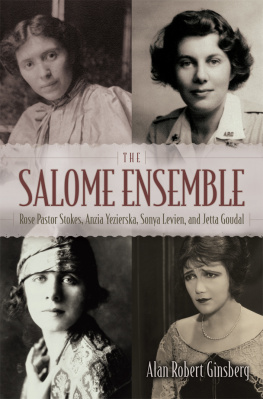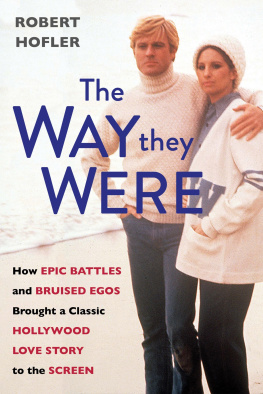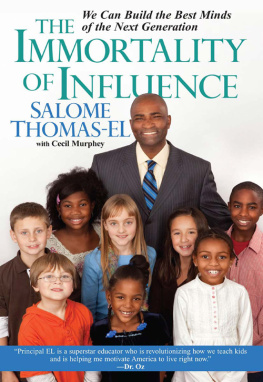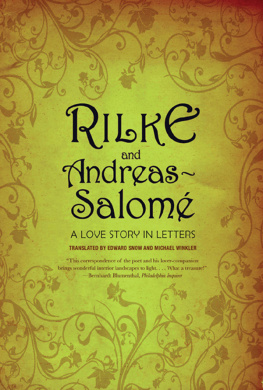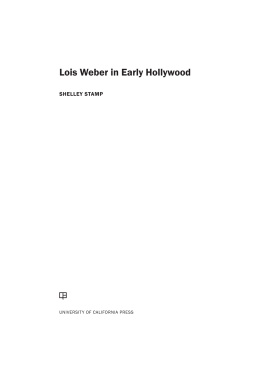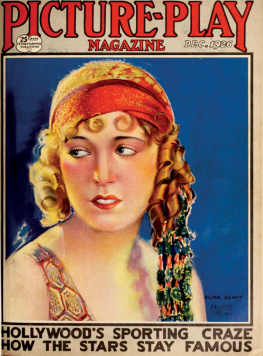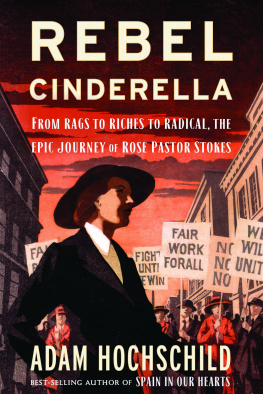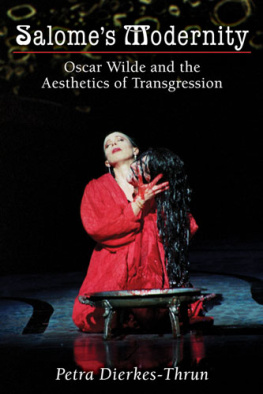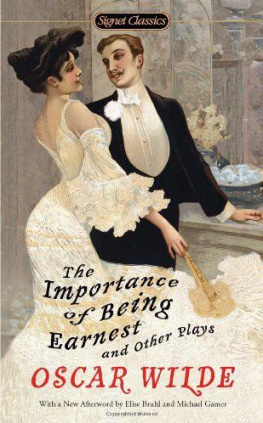
THE SALOME ENSEMBLE

Copyright 2016 by Syracuse University Press
Syracuse, New York 13244-5290
All Rights Reserved
First Edition 2016
16 17 18 19 20 21 6 5 4 3 2 1
The paper used in this publication meets the minimum requirements of the American National Standard for Information SciencesPermanence of Paper for Printed Library Materials, ANSI Z39.48-1992.
For a listing of books published and distributed by Syracuse University Press, visit www.SyracuseUniversityPress.syr.edu.
ISBN: 978-0-8156-3442-3 (cloth) 978-0-8156-1065-6 (paperback) 978-0-8156-5365-3 (e-book)
Library of Congress Cataloging-in-Publication Data
Names: Ginsberg, Alan Robert, author.
Title: The Salome Ensemble : Rose Pastor Stokes, Anzia Yezierska, Sonya Levien, and Jetta Goudal / Alan Robert Ginsberg.
Description: First Edition. | Syracuse, New York : Syracuse University Press, 2016. | Includes bibliographical references and index.
Identifiers: LCCN 2015047512| ISBN 9780815634423 (cloth : alk. paper) | ISBN 9780815610656 (pbk. : alk. paper) | ISBN 9780815653653 (e-book)
Subjects: LCSH: Arts, AmericanNew York (State)New York20th century. | Stokes, Rose Pastor, 18791933. | Yezierska, Anzia, 1880?1970. | Levien, Sonya, 1888?1960. | Goudal, Jetta, 18911985. | Jewish women artistsNew York (State)New York. | Women immigrantsNew York (State)New York. | New York (N.Y.)Intellectual life20th century. | New York (N.Y.)Social conditions20th century.
Classification: LCC NX511.N4 G56 2016 | DDC 709.747/0904dc23 LC record available at http://lccn.loc.gov/2015047512
Manufactured in the United States of America
To June and Ian
Table of Contents
Guide
Contents
Illustrations
Preface
In the following investigation a preponderance of the evidence leads to the Salome Ensemble. This was a quartet of Jewish women who immigrated to the United States around the beginning of the twentieth century. They left clues in published and unpublished work, contracts, correspondence, commentary, and court transcripts that draw widening circles embracing these women individually, in groups, and in the encompassing society. These cultural artifacts enable a micro-historical approach to womens history and immigration history. Rose Pastor Stokes, Anzia Yezierska, Sonya Levien, and Jetta Goudal began with four classic markers of low status: They were poor, Jewish, female, immigrants. They ascended socially and professionally, propelled by strong will, talent, and hard work, and became agents of change. These women arrogated power by controlling their social visibility in private and public spaces. They were a disorderly collection, informal, impermanent, and loosely bound by common purposes, empathy, and willful affiliation. They cooperated deliberately and effectively, inside and outside of formal associations, clubs, and institutions. Sometimes they were unconsciously influenced by each other. Together they created Salome of the Tenements, a popular novel and a Hollywood movie, which reflected, clarified, and guided their lived experiences. Each built an independent career and engaged in political and artistic expression at a time when they were denied many formal legal rights. They loved but refused to be subordinated to men. They chose to become Americans in the process of determining what that meant. By challenging the status quo they helped advance the rights of women, workers, immigrants, and other disadvantaged people. Of course they were not perfect. The women of the Salome Ensemble possessed many virtues, but they also were deeply flawed, as we all are, and their flaws are as instructive as their virtues. Their achievements proclaim the content of their characters and the contexts of their lives.
Rose Pastor Stokes, Anzia Yezierska, Sonya Levien, and Jetta Goudal have long attracted the attention of literary scholars and political, cultural, and film historians. Yet their friendships and works with each other have been little noted, despite the fact that the intersections of their lives had great significance to them, and more to teach modern readers than their individual affairs and artistic efforts considered separately. Their convergences disclose valuable insights about building identity, solidarity, and social change.
Until now, nothing has been written about what these women did for each other and meant to each other. Until now, nothing has been written about how these women befriended each other, how they collaborated professionally, and all that they accomplished together. Until now, nothing has been written chronicling how this small group of women blended their life experiences into a novel and translated that novel into a movie, contributing, learning, and benefiting each in her own way. Until now, their coalition as an ensemble has not been recognized and explored.
The failure to address these crucial connections is an omission that precludes full knowledge and appreciation of these women and their history. That omission creates the need to relate this previously untold story that cries out to be told. This book aims to rectify that failure, redress that omission, and fulfill that need. Upon close examination, the story of the Salome Ensemble reveals antecedents of contemporary gender, class, and ethno-racial issues with which we still grapple today. These women left a lasting legacy that continues to benefit even those who have never heard their names.
Acknowledgments
One of the satisfactions of completing this book is the opportunity to thank those who composed the wonderful support system that helped make it possible. My studies at Columbia University introduced me to many brilliant professors who became advisors, mentors, and friends. Learning with them was a privilege, a pleasure, and an invaluable education. Foremost among these are Andrew Delbanco, Ross Posnock, and Casey Blake, who provided patient counsel, comment, and criticism while sharing their vast knowledge of intellectual history and literature, and the precious resource of time from their busy schedules. They emphasized the connection of literary to historical and philosophical writing, posed challenging and provocative questions, and directed me to a profusion of important sources of information. These three professors offered guidance, instruction, wisdom, and unflagging support.
I benefited from the resources of many great institutions. The story of the Salome Ensemble was revealed in the Manuscripts Section, the Moving Image Section, and the Motion Picture, Broadcasting and Recorded Sound Section of the Library of Congress; the general collections of the New York Public Library, the Dorot Jewish Division and the Dewitt Wallace Periodical Room of the New York Public Library, and the New York Public Library for the Performing Arts; the Manuscripts and Archives Division of the Yale University Library; the Huntington Library, Art Collections and Botanical Gardens; the Howard Gotlieb Archival Research Center of the Boston University Library; the U.S. National Archives and Records Administration; the National Film Information Service; the Tamiment Library and Robert F. Wagner Labor Archives at the New York University Library; the Margaret Herrick Library of the Academy of Motion Picture Arts and Sciences; the George Eastman House; the Louis B. Mayer Library at the American Film Institute; the Butler Library at Columbia University and the Rare Books Section of the Butler Library; the California State Archives of the Office of the Secretary of State; the National Center for Jewish Film at the Brandeis University Library; the Womens Film Preservation Fund; the Anthology Film Archives; the Museum of the Moving Image; the NYC Department of Buildings; the New York County Archives and the Business Section of the New York County Archives of the New York County Clerk; the Corsa Collection of the New York Historical Society; the YIVO Library at the Center for Jewish History; the Office for Metropolitan History in New York City; the New York State Archives Partnership Trust; Paramount Pictures Corporation; and Viacom, Inc. This narrative also is informed by the burgeoning literature and commentary about the individual women of the Salome Ensemble and their work.
Next page
